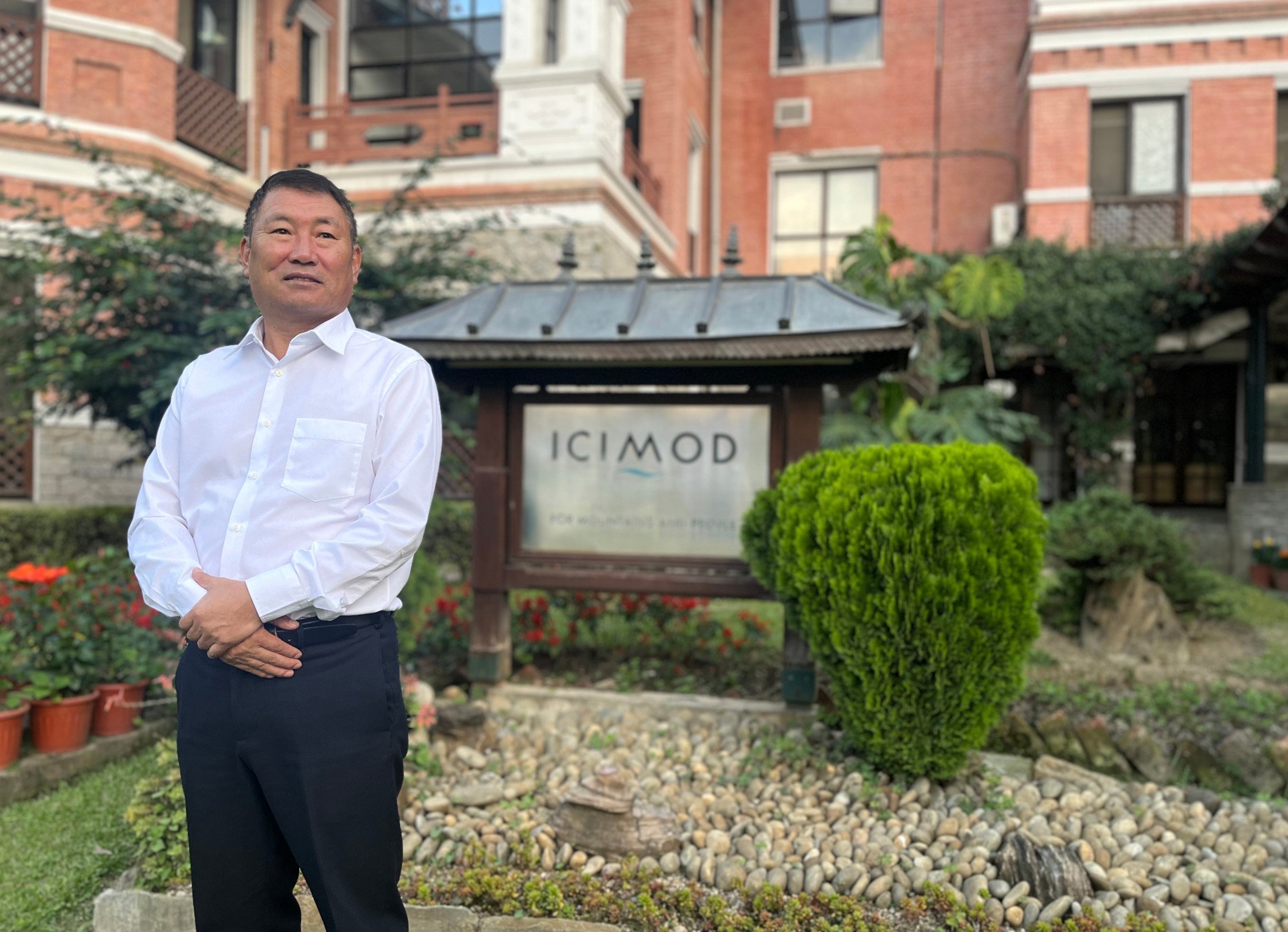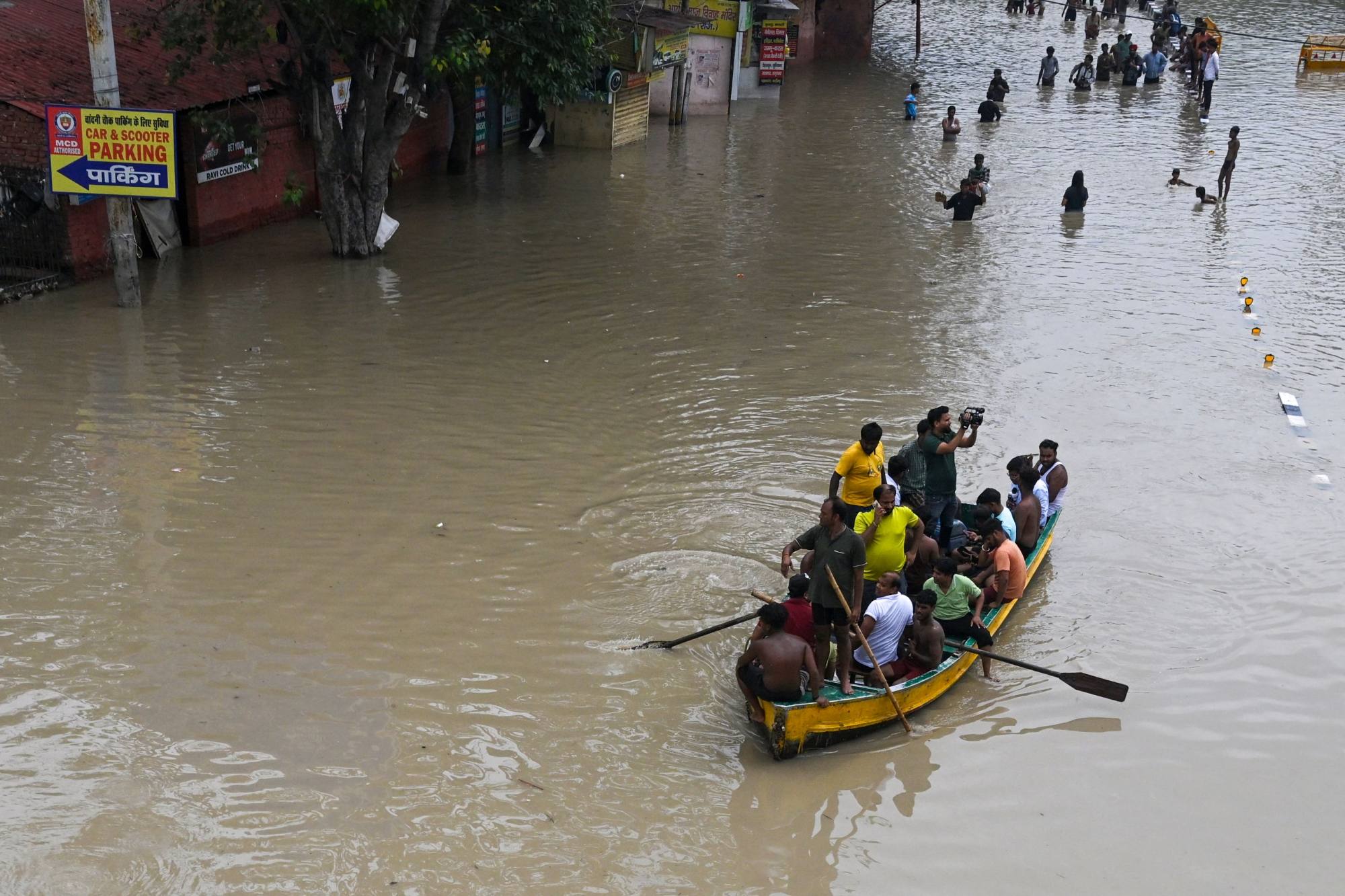More attention at COP28 urged for ‘vulnerable’ mountain range spanning Nepal, China, India

There are an estimated 54,000 glaciers in the Hindu Kush Himalaya region, and they are melting at an unprecedented rate. Glaciers in the region could lose up to 80 per cent of their current volume by 2100 as temperatures rise significantly, a June report by the International Centre for Integrated Mountain Development (ICIMOD) warned.
“Now is the only window of opportunity for us to take firm and immediate, urgent actions,” said Pema Gyamtsho, director general of ICIMOD, an intergovernmental environmental institution headquartered in Kathmandu. “Science must influence policymakers with the urgency that the actions need to be taken at a pace and scale that is probably unprecedented in the past.”

At COP28, Gyamtsho said all the Hindu Kush countries had to collectively send a message about the vulnerability of the region. He called for the need to increase investment and technology transfer to tackle the crisis.

“If the glaciers melt, they would contribute to the rise in sea levels,” Gyamtsho said. “If people move out because of disasters, they would have to go to other countries and regions, and that would increase pressure. So it makes good sense for other countries, or the Global North, to invest.”
A study published this month estimated that the extreme weather events, exacerbated by the climate crisis, has cost damages of US$143 billion per year between 2000 and 2019, or US$16 million per hour. Researchers said the estimates could help calculate loss and damage funds, which would help countries overcome the shocks from the climate crisis.
“In the meantime, what is urgently needed is that the mechanisms for accessing existing funds – like the Adaptation Fund or the Green Climate Fund – are made more friendly,” Gyamtsho said. “The process now is very cumbersome, so it’s very difficult to source these funds. We need to look at the mechanisms of making this more accessible.”
But while wealthy governments are expected to help lower-income countries, Gyamtsho said the latter should also take responsibility and be wary of their infrastructure projects. He said policymakers in the region should be mindful of the haphazard constructions in fragile terrain, as well as constructing mega dams and hydropower plants due to the potential risk of glacial lake outburst floods.
Countries in the Hindu Kush region – including India, China, Nepal and Pakistan – have substantial mountain areas and need to provide increased attention to the challenges they face at the COP28 summit, Gyamtsho said. He added these high altitude mountain areas were also less populated than other areas and do not bring much economic revenue, so they continue to be marginalised.
“In the past, small island nations have been very successful in lobbying for support, whereas the mountains have still not been featured in the climate discourses as much,” he said.

“We don’t need to compete one group against another. This has to be complementary – what happens in the mountains affects the islands and vice versa. So that realisation has to be built in because decision makers and people with authority are elsewhere.”
But besides COP summits, Gyamtsho said countries in the Hindu Kush Himalaya region needed to work together to tackle the impacts of climate crisis. He added there was a growing need for regional-level COPs, where countries could collaborate on transboundary issues, including air pollution, floods, glacial lake outburst floods and biodiversity conservation.
“If we look at the glaciers, many of them are in China,” Gyamtsho said. “So without receiving information from China in real time, downstream areas in Nepal, India or Bangladesh will not be able to prepare for the potential threat of a glacial lake outburst flood.”
Amid China-India border row, rapid development takes its toll on the Himalayas
Amid China-India border row, rapid development takes its toll on the Himalayas
Gyamtsho said the ICIMOD was now seeking to establish a higher-level institutional mechanism to strengthen regional cooperation. The body will bring together an expert group, including scientists and policymakers, who will take stock of climate-related events, gather evidence, and propose solutions for relevant government departments to take informed policy decisions, he said.
“What we are aiming at is not legally binding or protocols that need to be ratified by the parliament but something that is morally binding – a moral mandate on our regional member countries to share information, expertise and resources so lives and properties can be saved,” Gyamtsho said.
Gyamtsho said it is crucial that policymakers listen to science and take scientific evidences into account to plan for the future, adding that weather-related disasters, which are occurring more frequently and intensely in the Hindu Kush region and globally, should be a warning and wake-up call.
“We need assessments but we now have to believe what we see, hear and experience,” Gyamtsho said. “All the countries and their national policies must take cognisance of the fact that it’s not something that we can wait. We have to take action now, or it’ll be too late. Maybe 10 years down the line, we will not be able to reverse the process.”



 Huge Games Selection
Huge Games Selection